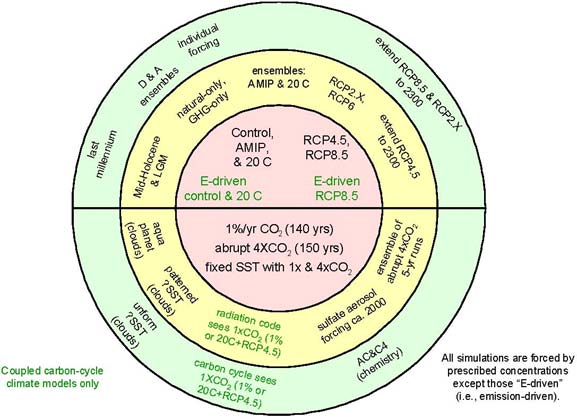April 6th, 2012
Key Findings
- This paper introduces the CMIP5 experiment design and explains the motivation for various integrations.
- The paper explains how CMIP5 output can be accessed.
- Differences in the forcings used in CMIP5 models, and differences in model responses to the same forcing, complicate interpretation of results.
- All the major climate groups in the world that will contribute data to CMIP5 are identified.
- CMIP5 will provide most of the model data used in the next IPCC (about 3,000 TB).
Summary
The fifth phase of the Coupled Model Intercomparison Project (CMIP5) will produce a coordinated multi-model dataset that is designed to advance our knowledge of climate variability and climate change. Researchers worldwide will analyze the model output and produce results that will underlie the forthcoming IPCC Fifth Assessment Report. Unprecedented in scale, CMIP5 has attracted participation from all major climate modeling groups. Building on previous CMIP efforts, CMIP5 includes “long-term” simulations of 20th century climate and projections for the 21st century and beyond (See figure).
Traditional atmosphere-ocean global climate models will for the first time be joined by more recently developed Earth System Models (ESMs) under an experiment design that allows both types of models to be compared to observations on an equal footing. ESMs will additionally provide estimates of carbon cycle feedback strength.
In addition to the long-term experiments, CMIP5 calls for an entirely new suite of “near-term” simulations, which focus on recent decades and the future to year 2035. These “decadal predictions” are initialized based on observations and will be used to explore the predictability of climate, and to assess model predictive skill.
The CMIP5 experiment design also allows for participation of stand-alone atmospheric models and includes a variety of idealized experiments that will improve understanding of the range of model responses found in the more complex and realistic simulations.
An exceptionally comprehensive set of model output will be collected which will be made freely available to researchers through an integrated but distributed data archive. CMIP5 analyses will play a central role in the upcoming IPCC 5th Assessment Report (AR5).
The limitations of the models and the experiment design are described in this paper.



